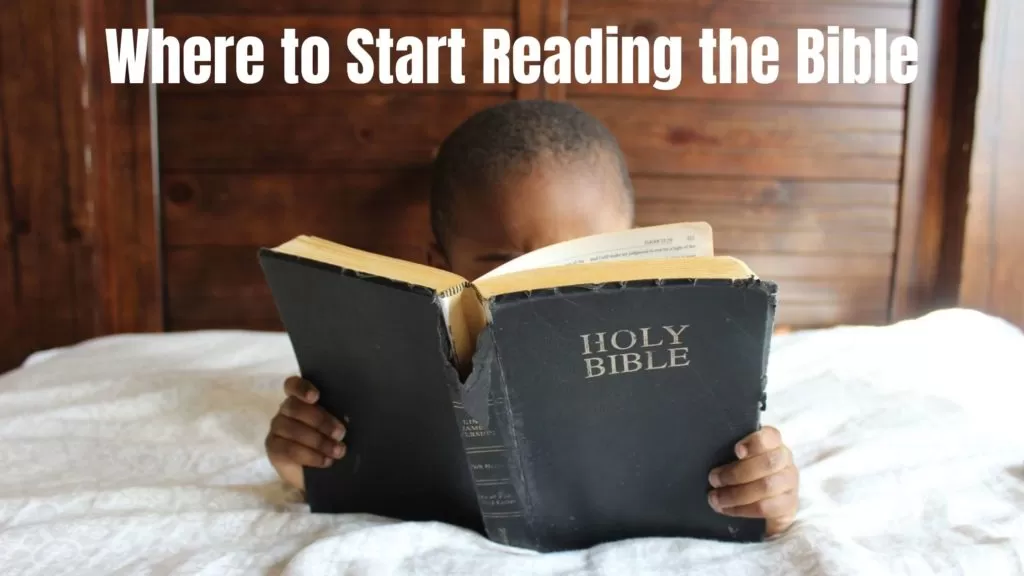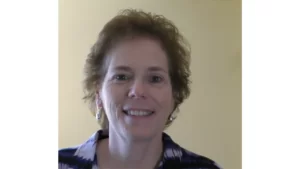In this blog I’m going to give you some ideas on where to start reading the Bible. But first…
Unfinished Business
In my last blog, “Now That You Have a Bible Let’s Look Inside,” I wrote about the books and their arrangement. What I didn’t write about was how to understand a scripture reference. Sorry, I have no clue how I forgot that, but not everyone understands how scripture references work!
It’s a pretty simple concept, so let’s look at one of the most famous scriptures: John 3:16. John is the book, 3 is the chapter and 16 is the verse. As I said, it’s simple. One thing that can be confusing when you begin is the lack of familiarity with the books. The longer book titles are abbreviated and some can easily be confused. For example 1CH and 1CO. The first is 1 Chronicles that is found in the Old Testament. The other is 1 Corinthians found in the New Testament. Look online and you will find a list of abbreviations you can print. Some Bibles include an abbreviation list at the beginning.
And now, onto today’s topic!
In the Beginning…
As I discussed in earlier blogs, the Bible is a collection of books that aren’t always in chronological order. Any one of the sixty-six books can be read as an individual book in any order you wish.
When I started reading I began with Genesis because I had no idea how the Bible was assembled. I finished Genesis and continued with the book that followed: Exodus. They were great books and are still two of my favorites. But then came Leviticus, Numbers, and Deuteronomy. I’m pretty sure I read about two chapters of Leviticus and quit. Leviticus is a rule book for the Levites who were God’s priests. Burnt offerings, grain offerings, sin offerings, and I was done. I looked at Numbers. It wasn’t very promising either. It is basically exactly what the name says – Numbers. God had instructed Moses to count the people of Israel. Ugh. (I didn’t realize that was only a few chapters and the rest of the book is pretty interesting!) I made the assumption that Deuteronomy wasn’t going to be any better and gave up.
The Good News!
Somewhere along the line, someone told me to read the New Testament Gospels (aka Good News). Matthew is the first book and opens with the genealogy of Jesus beginning with Abraham and ending with Jesus. The names were beyond challenging, but it only lasted for one page. I read all four books; Matthew, Mark, Luke, and John. Interesting! The life and times of Jesus on the earth. Awesome stories of healing, miracles, and lives transformed in an instant! I read six of the sixty-six books as a teenager. And that was it until I got into my early 20s when I went back and reread the same six books. But this time I finished John and kept going into Acts followed by Romans, and then I stayed with it through the final book – Revelation. There was so much I didn’t understand, but I loved the stories and the teachings.
Where to Start
Be warned, people have a lot of opinions on where to start. Christians will always say to start in the New Testament. From there, it becomes a question of which Gospel. Many will say to start with the book of Mark. Why? Because it’s the shortest. I find this to be the lamest reason to start with Mark. Are we that lazy? Maybe, but the longest Gospel is Matthew which has twenty-eight chapters. Another popular answer is John. This recommendation is because John gives the clearest explanation of Jesus’ purpose on earth and what he came to accomplish.
I will say a couple things about this Gospel for newbies. The first eight verses of John can be a bit challenging:
The Word Became Flesh
1 In the beginning was the Word, and the Word was with God, and the Word was God. 2 He was with God in the beginning. 3 Through him all things were made; without him nothing was made that has been made. 4 In him was life, and that life was the light of all mankind. 5 The light shines in the darkness, and the darkness has not overcome[a] it. (NIV)
What is “the Word” and why is it capitalized? The Word that John is talking about is Jesus. Let’s translate it this way: “In the beginning was Jesus, and Jesus was with God, and Jesus was God.” Of course, that will bring up a whole bunch of theological questions about Jesus being with God and God, but that’s a story for another day.
One other thing to take note of is verse six (through verse eight): “There came a man who was sent from God; his name was John.” This verse is talking about John the Baptist, not John the apostle who is the author of this book.
My Suggestions
I would read all four of the Gospels starting with Matthew. This is where you will learn about Jesus. Yes, it’s the longest but it’s not a sprint, it’s a marathon. I would also read the Old Testament Book of Genesis. The Gospels will refer to Abraham, Isaac, and Jacob. I think it’s a good idea to read their stories so you know who is being discussed. When Genesis is finished, continue into Exodus. Exodus is the story of Moses and the greatest story of deliverance ever told. The end of Exodus may get a little dry but fight through until the end.
As I mentioned, Leviticus, Numbers, and Deuteronomy are books you may want to skip until a later time. Where to continue in the Old Testament is really up to you. Remember, the Old Testament is divided into history, poetry, and prophecy. Feel free to choose what you want to read. A couple of great short books are Ruth and Esther. Psalms is another excellent book full of poems, songs of praise, repentance, and thankfulness. Although there are one hundred-fifty chapters, each psalm is a stand-alone chapter. You don’t need to read all one hundred-fifty in a row, you can skim through them and read a few in any order you like.
The last thing I will mention is the book of Proverbs. There are thirty-one chapters and it is not uncommon for people to read one chapter each day of the month (obviously doubling a day when there are only thirty days in a month). If you begin again at the first of each month, you will read through Proverbs twelve times.
Making Habits
Where ever you decide to begin reading, the best thing you can do is to make it a habit. Carve out a block of time each day. It doesn’t matter when, just make it a time that works best for you. It doesn’t need to be hours, it can be as little as 15 – 20 minutes. At that pace, the Bible can be read in one year.
If you would like more structure, there are many free Bible reading plans available on the internet. They range from yearly, to chronological, to the Gospel readings in ninety days.
There is no better time than the present! Pull out your calendar and schedule those 15-20 minutes. You won’t regret it!



